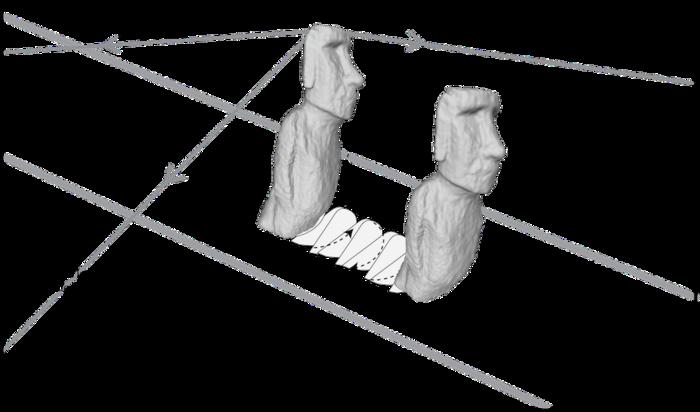Archaeologists have confirmed that Easter Island’s iconic Moai statues were “walked” to their platforms using rope by “remarkably few” of the island’s indigenous Rapa Nui people, solving a decades-long mystery.
A new study, published in the Journal of Archaeological Science, suggests that the Rapa Nui villagers used rope and “walked” the giant statues in a zig-zag motion along carefully designed roads.
“It shows that the Rapa Nui people were incredibly smart. They figured this out,” said study co-author Carl Lipo from Binghamton University.
“They're doing it the way that's consistent with the resources they have. So it really gives honour to those people, saying, look at what they were able to achieve, and we have a lot to learn from them in these principles,” Dr Lipo said.
The Moai statues are monolithic human figures carved by the Easter Island inhabitants between 1250 and 1500 AD.
Hundreds of these statues were carved from the main Moai quarry by the island’s natives and transported to stone platforms around the island’s perimeter.
Researchers had previously theorised that the large statues were “walked” from their quarry to ceremonial platforms using an upright, rocking motion, challenging another hypothesis that they were moved lying prone on wooden devices.
In the new study, scientists created high-resolution 3D models of the Moai statues and identified distinctive design features, including wide D-shaped bases and a forward lean, which would have made them more likely to be moved in a rocking, zig-zagging motion.
Researchers put the theory to the test by building a 4.35-ton replica Moai with the distinct “forward-lean” design.
The team could transport the Moai 100m in just 40 minutes with just 18 people – a marked improvement over previous vertical transport attempts.
“Once you get it moving, it isn’t hard at all – people are pulling with one arm. It conserves energy, and it moves really quickly,” Dr Lipo said.
“What we saw experimentally actually works. And as it gets bigger, it still works. All the attributes that we see about moving gigantic ones only get more and more consistent the bigger and bigger they get, because it becomes the only way you could move it,” he said.
Roads of the Rapa Nui discovered on the island add credit to the theory.
These roads, measuring about 4.5 meters wide with a concave cross-section, seem ideal for stabilising the statues as they moved forward, scientists say.

“Every time they're moving a statue, it looks like they're making a road. The road is part of moving the statue,” Dr Lipo said.
“We actually see them overlapping each other, and many parallel versions of them. What they are probably doing is clearing a path, moving it, clearing another, clearing it further, and moving it right in certain sequences. So they're spending a lot of time on the road part,” he added.
No other existing theory currently explains how the Moai were moved, according to researchers.
“Find some evidence that shows it couldn't be walking. Because nothing we've seen anywhere disproves that,” Dr Lipo said. “In fact, everything we ever see and ever thought of keeps strengthening the argument.”
Archaeologists unlock secrets of 4,000-year-old Ancient Egyptian temple
Mystery of 12,000-year-old animal carvings found in uninhabitable desert
Death masks ‘removed’ from Colombian mummies for first time to reveal faces
New study suggests this food may have been eaten by early human ancestors
The contents of this Stone Age paint box have surprised archaeologists. Here’s why
Ancient Egyptians guards used this artefact to warn of grave robbers







